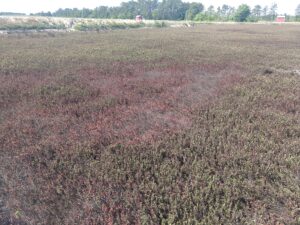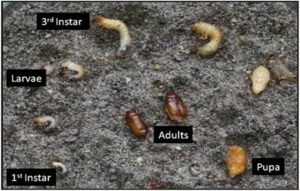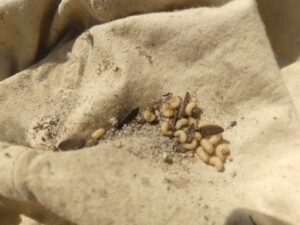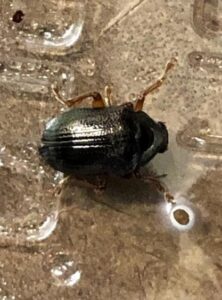The United States Environmental Protection Agency (EPA) is currently reviewing the registration of captan as mandated by the Federal Insecticide, Fungicide, and Rodenticide Act (FIFRA) to conduct a periodic review of existing pesticide registrations every 15 years. Captan is a broad-spectrum fungicide used in fruit and nut crops including almonds, apples, apricots, blueberries, cherries, grapes, nectarines, peaches, plums, prunes, and strawberries. A Proposed Interim Registration Review Decision (PID) was provided in 2022; however, the agency has issued an amended PID to identify risk mitigations and propose label changes that would address risks of concern for uses of captan. A summary of the EPA’s mitigation proposal is provided below. There is an open comment period for the public to provide responses to the proposed mitigation revisions and how they could impact production. The comment period ends on July 31, 2024. To view the amended proposed interim registration review in its entirety, see Docket No. EPA-HQ-OPP-2013-0296 at www.regulations.gov. For instruction on how to submit comments, visit https://www.regulations.gov/document/EPA-HQ-OPP-2013-0296-0335.
| Summary of Mitigation for Specific Crops |
| I. Orchard Crops
· Prohibit aerial application of DF/WDG and WP formulations; · Reduce maximum application rate for apples, peaches, and nectarines, from 4 to 3 lbs. ai/A; · Reduce maximum application rate for cherries from 3.16 to 3 lbs. a.i./A; · Require PF50 respirator, single layer protective clothing, 85 and chemical-resistant gloves for handlers mixing/loading DF/WDG and WP formulations for airblast application; · Require enclosed cabs and single layer protective clothing for airblast applicators; · Require enclosed cabs and single layer protective clothing for groundboom applicators treating orchard crops or PF10 respirator, chemical-resistant gloves, and single layer protective clothing; and · Limit application with mechanically pressurized handgun to spot treatment of areas missed with other application equipment, such as application to row ends. NOTE: There are no proposed changes to the current REIs on captan product labels for orchard crops. |
| II. Berries & Grapes
· Prohibit aerial application of DF/WDG and WP formulations but allow aerial application for liquid formulations. · Require PF50 respirator, chemical-resistant gloves, and single layer protective clothing for mixing and loading DF/WDG and WP formulations to be applied by airblast or groundboom. · For strawberries, EPA is proposing to require the PF50 respirator only for large growers whose operations are greater than 80 acres to protect mixers/loaders. · There are no changes to the REI for any berries; the REIs on current labels are sufficient. · Workers who are girdling and turning table grapes must observe a 5-day REI. |




